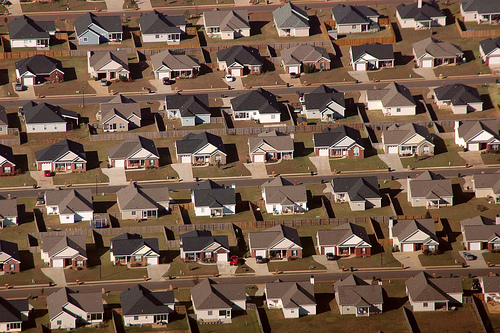 Not what the doctor ordered.Photo courtesy Mark Strozier via FlickrThe human cost of air pollution sometimes gets lost in the rhetoric surrounding political battles like the one over California’s Proposition 23, which would suspend the state’s landmark climate law, AB 32.
Not what the doctor ordered.Photo courtesy Mark Strozier via FlickrThe human cost of air pollution sometimes gets lost in the rhetoric surrounding political battles like the one over California’s Proposition 23, which would suspend the state’s landmark climate law, AB 32.
AB 32 is the underpinning for other California legislation that aims to reduce that pollution — in part by encouraging denser development and more walkable communities. It’s a kind of planning widely known as smart growth, and it is not uncontroversial. Conservatives such as Wendell Cox have characterized smart growth as “a war on the dream” in America. That would be the dream of a massive house with a two- or three- car garage in a traditional sprawling suburb.
For most people, however, “the dream” includes health. And here’s the reality: Sprawl development leads to more vehicle miles traveled (VMT). More VMT means more emissions (in California, passenger vehicles account for 30 percent of greenhouse gas emissions). And more emissions mean more people dying too young — as well as staggering public health bills.
Last week, the California branch of the American Lung Association (ALA) released new data in an effort to cut through the smog. Here’s how they summarized their findings:
The analysis concludes that more sustainable community development and more diverse transportation options will clean the air, reduce pollution-related illness and death, and avoid significant health costs. Specifically, the analysis found that by 2035, less driving annually avoids:
- $1.66 billion pollution-related heath costs
- 140 premature deaths
- 260 heart attacks
- 215 acute bronchitis incidents
- 95 cases of chronic bronchitis
- 2,370 asthma attacks
- 101,960 other respiratory symptoms
- 205 respiratory ER trips and hospitalizations
- 16,550 lost work days
- 132,190 tons of criteria pollutants
These numbers are conservative and would be higher if they included the additional and significant benefits of increased physical activity from communities that encourage more walking and cycling.
The ALA in California backs the state’s efforts to reduce sprawl and foster a different kind of built environment in the future:
“If doctors and other health experts designed our cities, they would look quite different than the sprawling communities we see today,” said Sonal R. Patel, M.D., American Lung Association in California Board Member and Director of White Memorial Pediatric Medical Groups Division of Allergy and Immunology in Los Angeles. “Cities would provide more healthy choices, more opportunities for walking and biking, better access to transit, less congestion, more housing close to workplaces, and more parks for kids and families to enjoy.”
It sounds simple when you put it like that. But mustering the political will necessary to make that kind of change real is more complicated.
(h/t Smart Growth America)



